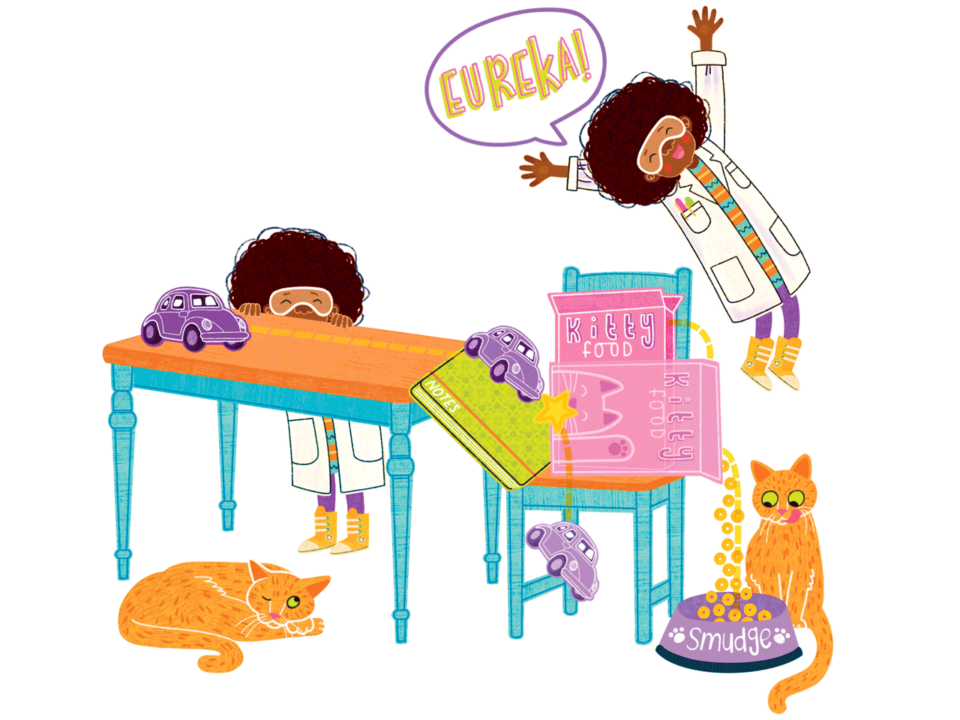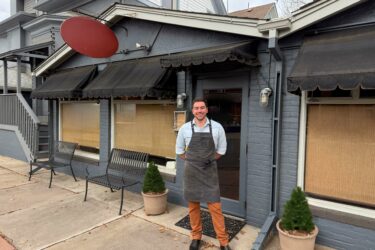There’s a new toy in town, and despite its simple wooden design, its power shouldn’t be underestimated. Co-creators Anna Gilbertson and Alana Aamodt, who studied physics at Colorado College in Colorado Springs, noticed a difference between the way STEM is taught in classrooms and the way it has played out in their jobs. “A lot of science can feel kind of intimidating and lofty,” Gilbertson says. “That’s not how science in the real world happens. It happens in teams, and it happens with a ton of mistakes.”
To help kids understand the STEM principles of trial and error, problem-solving, and hands-on work, they created Momentix kits—wooden toys that provide the building blocks for Rube Goldberg-style chain reaction machines. Colorado Parent caught up with the creators.
CP: What is important about this kind of play and learning for any child’s development?
AG: For a kid who doesn’t like to sit down and do math problems or sit down and code, they get to learn this problem solving in three dimensions. They use their strengths of being social and active. The more the culture of STEM emphasizes creativity, collaboration, and resilience, the more underrepresented kids feel comfortable in those spaces. Self-perception is so important. Once a kid decides, I’m not a science person, they’re going to stop pursuing that. I think it’s important to catch them and to start instigating that culture change in the school age.
CP: What is it about the design of your product that convinces kids to try STEM?
AG: It comes down to doing things that are hands-on and fun, that leave kids with a positive feeling about what they just did. Engineering is all about big systems that are made of tiny cause and effect moments; whether that’s a mechanical moment, or chemical moment, or computational moment. Chain reaction machines are a good analog for that.
AA: I think the trap of a lot of STEM toys is lots of instructions and little pieces and wires, and things that feel inaccessible or boring, or super masculine. We tried to make Momentix pieces colorful, easy to put together, and inviting. It looks really simple, [but] once you do start playing with it, there are a lot of possibilities.
CP: As you’ve interacted with hundreds of kids through research and development, what kind of reactions are you seeing?
AG: I think the coolest thing has just been seeing and hearing from people all over the world who are excited not just about the prospect of building a chain reaction machine, but the prospect of coming to that process with a lot of their own ideas. We give this thing, that we think we’ve thought so thoroughly about, to a child and they’ve always come up with a completely new way to use it.
CP: Can you explain how the Ask, Brainstorm, Design process helps kids use Momentix’s elements to create unique physics machines?
AA: We both studied physics, but we also studied design, and there’s this great practice in design-thinking of bringing your problem and turning it into “How might we?” So we try to phrase that back to kids with the materials we have, and also how we interact with kids.
AG: Usually they have a half-baked plan that completely breaks the laws of physics, but they’ll try it anyway, and they’ll see it fail and then they’ll come up with a new idea to change it and fix it. When they kind of do that engineering design process and eventually it works, there’s this universal, raw emotional celebration. And every kid we’ve ever seen, they always jump up in the air with their two hands and jump up and down.
CP: Out of the different elements in a chain reaction machine, what is your favorite to use, and why?
AG: I think my favorite to build are ramps because you can build a ramp out of literally anything, even a T-shirt.
AA: I love a lever. I see levers everywhere in the world now. I’m like: everything is a fulcrum (the point on which a beam pivots). This little thing is so powerful.
Preorders for the Momentix motionKit are currently available, with an expected delivery of May 2022.
Try it at home!
Here’s a simple chain reaction machine you can build with items around the house. A rolling object (toy car) + ramp (notebook) + lever (food box) + gravity = Rube Goldberg pet feeder






